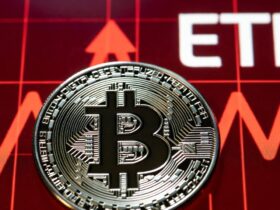Key facts:
The specter of deflation and economic recession haunts China.
The government is preparing economic stimulus packages to face the crisis.
China is showing eerily similar signs to the Great Recession of 2008. According to “The Kobeissi Letter,” a financial analysis newsletter founded by expert Adam Kobeissi, the Asian giant could be on the verge of a severe recession.
In recent days, the Chinese government has begun to apply economic stimuli on the scale of those they implemented during the 2020 pandemic, revealing that the country is immersed in a serious crisis that could spread to the rest of the world.
The analysts they ask whether China could be dragging the world economy into a global recession, a valid question considering that the first signs of weakness were evident after China’s HY real estate index fell by 82% in just over two years.
This situation worsened when Evergrande, one of the country’s real estate giants, filed for bankruptcy under Chapter 15 of the United States Bankruptcy Law in 2023, as reported by CriptoNoticias.
Since its founding in 1996, Evergrande had been a pillar of the Chinese real estate boom, representing a fifth of that country’s economy.
The collapse of the real estate index led to a situation comparable to the 2008 crisis, although, according to “The Kobeissi Letter”, almost no one mentioned it at the time.
Now, China faces its longest period of deflation since 1999with five consecutive quarters of price declines as seen in the following graph. An event that did not even occur during the global financial crisis of 2008.


“While the rest of the world struggles with inflation, China is trapped in a dangerous deflation, which could be even more damaging,” the report warns.
Deflation, the opposite of inflation, involves a prolonged decline in the prices of goods and services, which may seem positive at first. However, the reality is bleaker: When consumers expect prices to continue falling, they postpone their purchases, freezing the economy and reducing demand.
The impact of this deflation is evident in several key sectors of the Chinese economy. Unemployment has reached historic highs in the last decade, the manufacturing industry is paralyzed and the construction sector continues to struggle after the collapse of the property market. At the same time, consumer demand is weak.
“Everything seems to indicate that China is already in a major recession, and it probably is,” says “The Kobeissi Letter.”
Economic responses to contain the crisis
Faced with this situation, the Chinese government has entered “panic mode,” according to the analysis.
Among the measures they have implemented are the following: a reduction in bank reserve requirements by 0.5%, a decrease in seven-day retail interest rates by 0.2%, cuts in rates mortgage payments, the injection of the equivalent of $142 billion into the banking system, and aggressive rate cuts.
However, “The Kobeissi Letter” considers that These stimuli are just the beginning.
“The intervention is being compared to a monetary ‘bazooka’, but the key will be whether the market reacts positively and whether the measures restore enough confidence to attract foreign capital, as the market remains in doubt,” explains the economist Daniel Muvdi.
The series of policies aimed at reviving its faltering real estate market and its anemic stock market. Apparently it has worked (for now), since Chinese A50 index futures increased by 17%, says a report from the investment firm QCP Capital
This index, known as A50, is made up of the 50 largest companies listed on the Shanghai and Shenzhen stock exchanges.
«We believe that the People’s Bank of China is going to adopt more flexibility measures, and they have communicated this. Furthermore, the Federal Reserve has joined the global rate cut cycle, so all major central banks (except the Bank of Japan) are now willing to inject more liquidity into the market.
QCP Capital, investment firm report.
China’s sale of US Treasury bonds
Another indication of the financial crisis that China is going through is the massive liquidation of its holdings in US Treasury bonds.
In the last three years, China has reduced its Treasury bonds by 30%, equivalent to $300 billion, leaving its reserves at a 15-year low, approximately $780 billion, as seen in the graph below.

This movement, according to the analysis, could be motivated by the urgent need to raise capital to stabilize its economy.
Fear of a new wave of inflation
Despite efforts to avoid a major collapse, “The Kobeissi Letter” issues a warning: Have we not learned from the mistakes made in 2020? Massive fiscal stimulus could trigger a new wave of global inflationsimilar to the crisis of the 1970s, he considers.
“If central banks act too quickly, the result could be catastrophic,” he warns.
At a time when the People’s Bank of China and the US Federal Reserve appear to be in sync in their approach to monetary easing, Concerns about uncontrolled global inflation increase.
In this context, the world is closely watching what is happening in China, since the fate of its economy could have devastating consequences for the rest of the planet.
Bitcoin, an alternative for the crisis
As the narrative of bitcoin (BTC) as a decentralized, anti-inflationary, and censorship-resistant currency continues to gain traction, could benefit from a worsening of the crisis like the one presented by China.
The reduction in interest rates in China also serves as a boost for bitcoin. When the central bank lowers interest rates, money becomes cheaper and more accessible. This encourages people and companies to take out loans and invest in assets such as bitcoin and cryptocurrencies.
In addition, markets are increasingly focused on the possibility that the US Federal Reserve will cut interest rates again at its November meeting, which could make US Treasuries even more unattractive, opening the door for more capital to enter the digital currency market.
Precisely, bitcoin has experienced a slight rise, encouraged by China and also by the new inflation data in the United States. As seen in the following graph of TradingViewthe currency is trading at $65,700.

For now, BTC remains in the lateral range it maintained six months ago after reaching its all-time high in March.






Leave a Reply